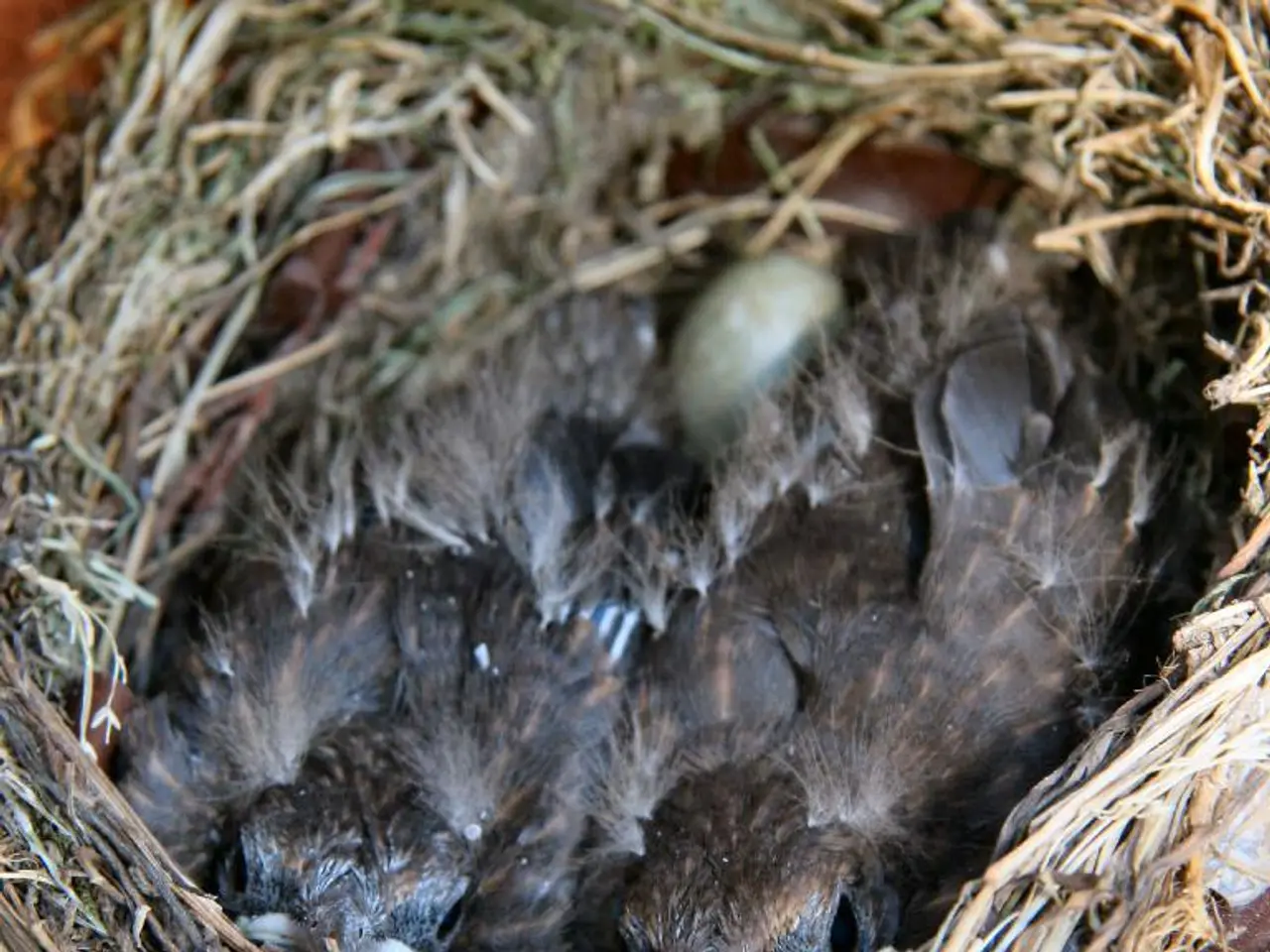Guide for Helping Young Birds: Recognizing and Aiding Infant Aviary Creatures
In the world of avian life, baby birds, or nestlings, hatchlings, or chicks, go through several distinct phases of growth as they transition from an egg to an adult. These stages, from the egg to the adult, include the hatchling, nestling, fledgling, juvenile, and finally, the adult.
A newly hatched bird, or hatchling, is often naked, blind, and completely dependent on its parents for warmth and food. The hatchling rapidly grows and transforms into a nestling, a bird that is a few days old, relatively naked, and still dependent on its parents and the nest for support. During this stage, the nestling grows rapidly, gaining feathers and strength, and begins to learn basic survival skills.
As the nestling nears the fledgling stage, down feathers are gradually replaced by adult-type feathers. A fledgling is older, feathered, and learning to fly. This stage is a learning phase where flying and foraging skills are honed. Fledglings are often found on the ground, but they are still tended and fed by nearby parents.
After the fledgling stage, the young bird enters the juvenile stage. At this point, the young bird has left its parents' care and can fly well, but it is not yet sexually mature. The juvenile undergoes its first molt to adult plumage and hones its social, flying, and feeding skills.
Finally, the bird reaches the adult stage, where it has mature feathers, full flying ability, and reproductive capability.
It's important to note that birds can be categorized by developmental types, such as precocial and altricial. Precocial birds are more developed at hatching, mobile, and have down or contour feathers, while altricial birds are born helpless and featherless.
To identify these stages visually, hatchlings and nestlings often have sparse or downy feathers, closed or barely open eyes, and cannot leave the nest. Fledglings display more developed feathers called pin feathers or juvenile feathers, may be seen hopping or fluttering near the nest, and make short flights. Juveniles resemble adults but often have duller or patchy plumage and may lack full adult markings.
When caring for a baby bird, it's crucial to remember that milk, bread, or birdseed can be dangerous and even fatal. Instead, softened dog kibble, hard-boiled eggs mashed into a paste, or mealworms can be used as temporary food sources. If a baby bird has fallen out of its nest, it should be returned to the nest if possible. If the nest cannot be found, a makeshift nest can be created and attached to a tree nearby.
Understanding the stages of a baby bird's development can help us appreciate the miraculous journey from egg to adult, and it can also aid in providing the necessary care for these young, vulnerable creatures.
[1] BirdWatchingDaily.com, "The Life Cycle of a Baby Bird," https://www.birdwatchingdaily.com/learn/the-life-cycle-of-a-baby-bird/ [2] Audubon.org, "Bird Development," https://www.audubon.org/field-guide/bird/bird-development [3] CornellLabofOrnithology.org, "Bird Development," https://www.allaboutbirds.org/guide/Bird_Development/overview [4] NationalGeographic.com, "Baby Birds," https://www.nationalgeographic.com/animals/birds/baby-birds/
- Raptors, like other bird species, undergo several developmental stages, starting as hatchlings and progressing to fledglings, juveniles, and finally, adults.
- Hummingbirds, as altricial birds, are born helpless and featherless, requiring most of their early development under their parents' care before transitioning into fledglings and eventually, adults.
- In the realm of education and self-development, one can gain valuable insights into the life cycles of birds, thereby fostering an appreciation for science and birds as a whole.
- Parenting strategies vary among bird species, with some, such as hummingbirds, exhibiting exceptional dedication in caring for their young, while others, like precocial birds, become more independent shortly after hatching.




